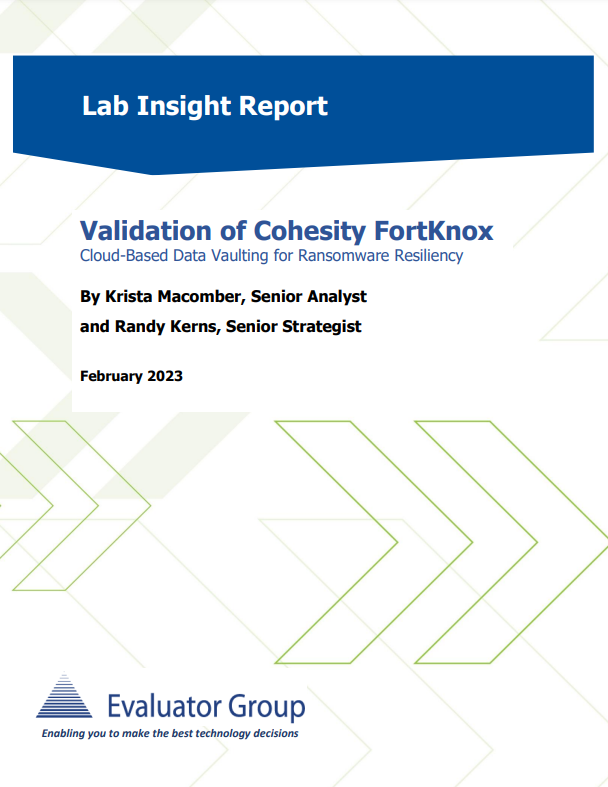
Validation of Cohesity FortKnox Cloud-Based Data Vaulting for Ransomware Resiliency
The practice of air gapping – that is, storing tertiary backup copies in a storage environment that is
isolated from the production and primary backup environments – has long been implemented by IT
Operations as a best practice within their backup and broader data protection strategies. These isolated
backup environments have become even more necessary with the rise of ransomware attacks, and
attacks from malicious insiders such as rogue administrators. In the event that a malicious actor accesses
the production or primary backup environment, they cannot access the air gapped copies. As a result,
the air-gapped storage provides a clean copy of data that can be recovered from.
As more customers look to implement air-gapped storage for a larger component of their data environments, and as they look for easier accessibility and faster time-to-recovery, customers are looking beyond the tape storage solutions that traditionally have served as the air-gapped storage repository. Many have begun implementing cloud-based “data vaults.” In fact, Evaluator Group’s recent Trends in Enterprise Data Protection study showed that approximately one in five enterprises are using the public cloud as an isolated/air-gapped storage repository.

As more customers look to implement air-gapped storage for a larger component of their data environments, and as they look for easier accessibility and faster time-to-recovery, customers are looking beyond the tape storage solutions that traditionally have served as the air-gapped storage repository. Many have begun implementing cloud-based “data vaults.” In fact, Evaluator Group’s recent Trends in Enterprise Data Protection study showed that approximately one in five enterprises are using the public cloud as an isolated/air-gapped storage repository.